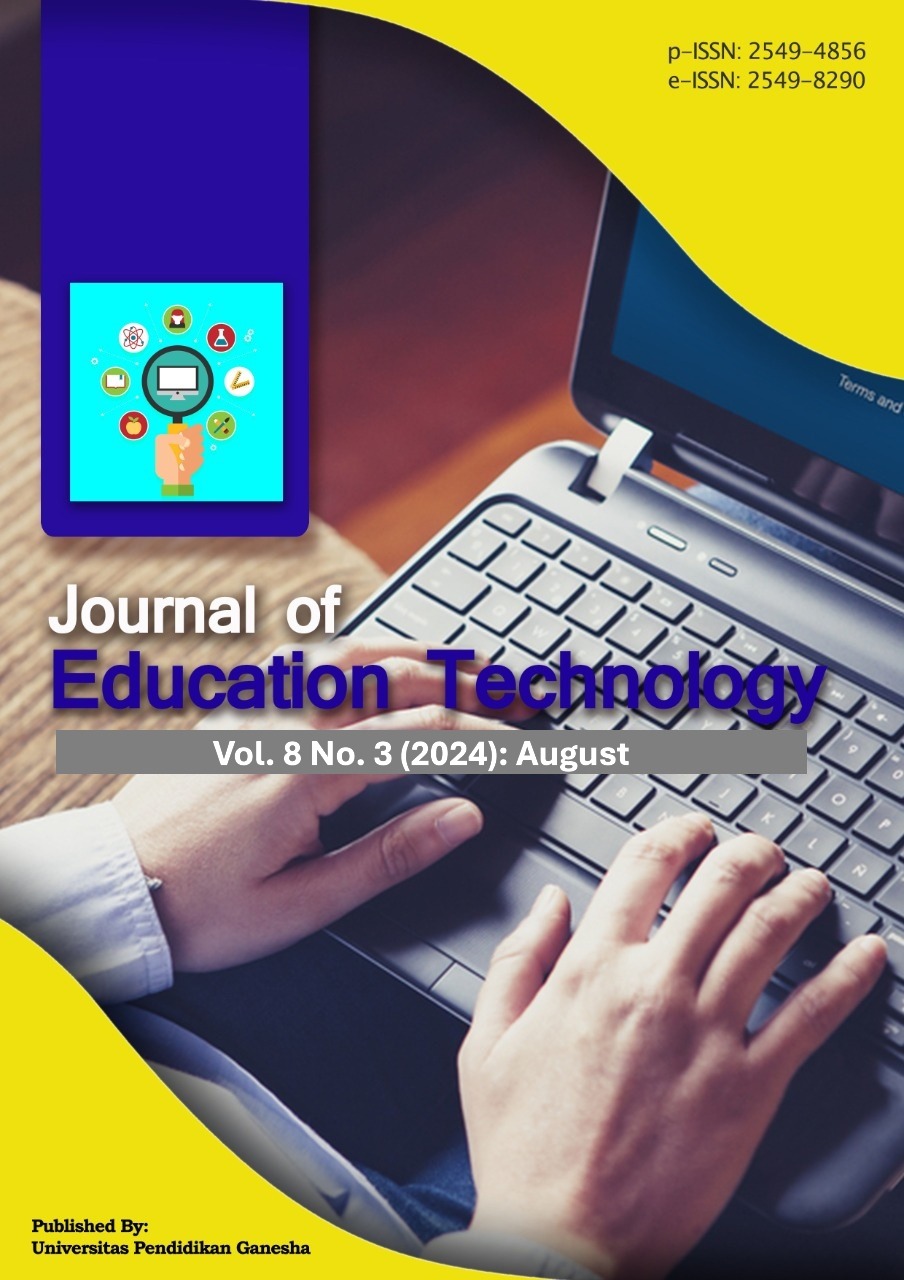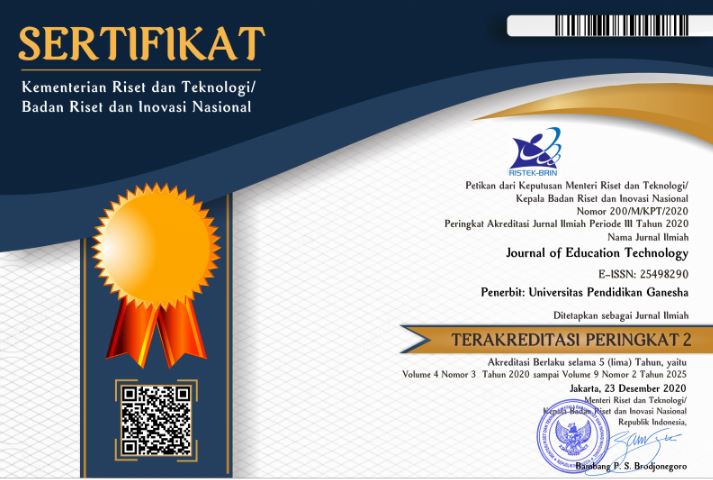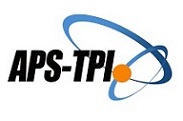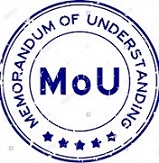Integrated Assessment for Introduction to Engineering, Industrial Seminar and Profession and Introduction to Computer Programming Courses
DOI:
https://doi.org/10.23887/jet.v8i3.76322Keywords:
Integrated Assessment, Computer Programming, Engineering, Seminars and ProfessionsAbstract
This study highlights the challenges faced in integrating first-year chemical engineering courses, namely Introduction to Engineering, Industrial and Professional Seminar, and Introduction to Computer Programming. The main challenge lies in effective integrated assessment, especially in ensuring that students understand the interrelationships between the various disciplines and their applications in real-world contexts. The study aims to develop an effective integrated assessment model based on constructive alignment to support student learning in the three courses, with a focus on solving authentic problems related to sustainability. The courses are designed with an integrated assessment approach through project reports, exhibitions, reflection journals, and learning portfolios. Real-world problems relevant to sustainability are used as the main theme, and assessments are conducted both formatively and summatively to measure learning success. This integrated assessment has succeeded in improving students' skills in critical thinking, communication, and technical abilities. Positive feedback from students and expert panels indicates that this assessment model is effective in connecting the various disciplines and preparing students for real-world challenges.
References
Abdullah, F., Ward, R., & Ahmed, E. (2016). Investigating the influence of the most commonly used external variables of TAM on students’ Perceived Ease of Use (PEOU) and Perceived Usefulness (PU) of e-portfolios. Computers in Human Behavior, 63, 75–90. https://doi.org/https://doi.org/10.1016/j.chb.2016.05.014.
Abdurrahmansyah, A., Sugilar, H., Ismail, I., & Warna, D. (2022). Online Learning Phenomenon: From the Perspective of Learning Facilities, Curriculum, and Character of Elementary School Students. Education Sciences, 12(8). https://doi.org/10.3390/educsci12080508.
Akhmad, R., Sugandi, D., Nandi, N., & Rahmawati, R. (2018). Infographic Design as Visualization of Geography Learning Media. IOP Conference Series: Earth and Environmental Science, 145(1). https://doi.org/10.1088/1755-1315/145/1/012011.
Alajmi, M. M. (2019). The impact of e-portfolio use on the development of professional standards and life skills of students: A case study. Entrepreneurship and Sustainability Issues, 6(4), 1714–1735. https://doi.org/10.9770/jesi.2019.6.4(12).
Ali, M., Triyono, B., & Koehler, T. (2020). Evaluation of Indonesian Technical and Vocational Education in Addressing the Gap in Job Skills Required by Industry. Proceeding - 2020 3rd International Conference on Vocational Education and Electrical Engineering: Strengthening the Framework of Society 5.0 through Innovations in Education, Electrical, Engineering and Informatics Engineering, ICVEE 2020. https://doi.org/10.1109/ICVEE50212.2020.9243222.
Alias, M., Masek, A., & Salleh, H. H. M. (2015). Self, peer and teacher assessments in problem based learning: are they in agreements? Procedia - Social and Behavioral Sciences, 204, 309–317. https://doi.org/10.1016/j.sbspro.2015.08.157.
Alkhudiry, R. (2022). The Contribution of Vygotsky’s Sociocultural Theory in Mediating L2 Knowledge Co-Construction. Theory and Practice in Language Studies, 12(10), 2117–2123. https://doi.org/10.17507/tpls.1210.19.
Asbari, M., Nurhayati, W., & Purwanto, A. (2019). The effect of parenting style and genetic personality on children character development. Jurnal Penelitian Dan Evaluasi Pendidikan, 23(2), 206–218. https://doi.org/10.21831/pep.v23i2.28151.
Balaban, I., Mu, E., & Divjak, B. (2013). Development of an electronic Portfolio system success model: An information systems approach. Computers & Education, 60(1), 396–411. https://doi.org/10.1016/j.compedu.2012.06.013.
Beckers, J., Dolmans, D., & Van Merriënboer, J. (2016). e-Portfolios enhancing students’ self-directed learning: A systematic review of influencing factors. Australasian Journal of Educational Technology, 32(2). https://doi.org/10.14742/ajet.2528.
Beneroso, D., & Robinson, J. (2022). Online project-based learning in engineering design: Supporting the acquisition of design skills. Education for Chemical Engineers, 38(October 2021), 38–47. https://doi.org/10.1016/j.ece.2021.09.002.
Bhagat, K. K., & Spector, J. M. (2017). International Forum of Educational Technology & Society Formative Assessment in Complex Problem-Solving Domains: The Emerging Role of Assessment Technologies. Source: Journal of Educational Technology & Society, 20(4), 312–317.
Boyd, A. S., & Darragh, J. J. (2020). Critical literacies on the university campus: Engaging pre-service teachers with social action projects. English Teaching, 19(1), 49–63. https://doi.org/10.1108/ETPC-05-2019-0066.
Carless, D., & Boud, D. (2018). The development of student feedback literacy: enabling uptake of feedback. Assessment and Evaluation in Higher Education, 43(8), 1315–1325. https://doi.org/10.1080/02602938.2018.1463354.
Chetty, N. D. S., Handayani, L., Sahabudin, N. A., Ali, Z., Hamzah, N., Rahman, N. S. A., & Kasim, S. (2019). Learning styles and teaching styles determine students’ academic performances. International Journal of Evaluation and Research in Education, 8(4), 610–615. https://doi.org/10.11591/ijere.v8i3. 20345.
Chust, P., Alberto, D. de A. M., Cerdan, A. P., García, J. C. R., Server, J.-V. B., Daviu, E. A., Llorente, C. V., & Andres, F. J. E. (2013). The Teaching-Learning Process in the Classroom Using Smartphones: Challenges and Opportunities. The International Journal of Technologies in Learning, 19(3). https://riunet.upv.es/bitstream/handle/10251/45746/R4 - The Teaching-Learning Process in the Classroom - Using Smartphones Challenges and Opportunities.pdf?sequence=4.
Cookson, M. D., & Stirk, P. M. R. (2019). Developing Students’ Writing Skill in English - A Process Approach. Journal for Research Scholars and Professionals of English Language Teaching, 2(6). https://www.researchgate.net/profile/V-Chandra-Rao/publication/325489625.
Garza, A. de la, & Travis, C. (2019). The STEAM Revolution. In The STEAM Revolution. https://doi.org/10.1007/978-3-319-89818-6.
Hartman, R. J., Townsend, M. B., & Jackson, M. (2019). Educators’ perceptions of technology integration into the classroom: a descriptive case study. Journal of Research in Innovative Teaching and Learning, 12(3). https://doi.org/10.1108/JRIT-03-2019-0044.
Hashemifardnia, A., Namaziandost, E., & Shafiee, S. (2018). The Effect of Implementing Flipped Classrooms on Iranian Junior High School Students’ Reading Comprehension. Theory and Practice in Language Studies, 8(6), 665. https://doi.org/10.17507/tpls.0806.17.
Hendarwati, E., Nurlaela, L., & Bachri, B. S. (2021). The collaborative problem based learning model innovation. Journal of Educational and Social Research, 11(4), 97–106. https://doi.org/10.36941/jesr-2021-0080.
Heri Suryaman, Kusnan, & Husni Mubarok. (2020). Profile of Online Learning in Building Engineering Education Study Program During the COVID-19 Pandemic. IJORER : International Journal of Recent Educational Research, 1(2), 63–77. https://doi.org/10.46245/ijorer.v1i2.42.
Hidayat, Z., Ratnawulan, & Gusnedi. (2019). Analysis of learning media in developing science textbooks with theme energy in life using integrated model for integrated 21st century learning. Journal of Physics: Conference Series, 1185(1). https://doi.org/10.1088/1742-6596/1185/1/012070.
Ho, P. (2015). Common Errors in Writing Journals of the English-Major Students At Hcmc Open University. Journal of Science Ho Chi Minh City Open University, 2(JUNE), 52–61. https://journalofscience.ou.edu.vn/index.php/soci-en/article/view/315.
Huang, W., & Chang, T. (2019). Impacts of English Learning Strategies, Interests, and Anxieties on English Learning Achievements: Taking Example from Chinese College Students. Advances in Social Science, Education and Humanities Research, 315, 174–179. https://doi.org/10.2991/icpcs-19.2019.41.
Huisman, B., Saab, N., van den Broek, P., & van Driel, J. (2019). The impact of formative peer feedback on higher education students’ academic writing: a Meta-Analysis. Assessment and Evaluation in Higher Education, 44(6), 863–880. https://doi.org/10.1080/02602938.2018.1545896.
Hussin, W. N. T. W., Harun, J., & Shukor, N. A. (2018). Problem Based Learning to Enhance Students Critical Thinking Skill via Online Tools. Asian Social Science, 15(1), 14. https://doi.org/10.5539/ass.v15n1p14.
Jacques, L. A., Cian, H., Herro, D. C., & Quigley, C. (2020). The impact of questioning techniques on STEAM instruction. Action in Teacher Education, 42(3), 290–308. https://doi.org/10.1080/01626620.2019.1638848.
Jensen-Doss, A., Haimes, E. M. B., Smith, A. M., Lyon, A. R., Lewis, C. C., Stanick, C. F., & Hawley, K. M. (2018). Monitoring treatment progress and providing feedback is viewed favorably but rarely used in practice. Administration and Policy in Mental Health and Mental Health Services Research, 45(1), 48–61. https://doi.org/10.1007/s10488-016-0763-0.
Jubaerudin, J. M., Supratman, & Santika, S. (2021). Pengembangan Media Interaktif Berbasis Android Berbantuan Articulate Storyline 3 Pada Pembelajaran Matematika di Masa Pandemi. JARME (Journal of Authentic Research on Mathematics Education), 3(2), 178–189. https://doi.org/10.37058/jarme.v3i2.3191.
Kearney, M., & Maher, D. (2019). Mobile learning in pre-service teacher education: Examining the use of professional learning networks. Australasian Journal of Educational Technology, 35(1). https://doi.org/10.14742/ajet.4073.
Khasanah, U., Rahayu, R., & Ristiyani. (2021). Analisis Kemampuan Pemecahan Masalah Matematis Siswa Kelas IV Materi Bangun Datar Berdasarkan Teori Polya. Jurnal Didaktika, 1(2), 230–242. https://doi.org/10.17509/didaktika.v1i2.36538.
Konchiab, S., & Munpanya, P. (2021). Investigating Thai EFL Undergraduates’ Oral Presentation Performances and Experiences, Using Teacher and Student Self-Assessments. THAITESOL Journal, 34(1), 96–117. https://eric.ed.gov/?id=EJ1304645.
MacLeod, M., & van der Veen, J. T. (2020). Scaffolding interdisciplinary project-based learning: a case study. European Journal of Engineering Education, 45(3), 363–377. https://doi.org/10.1080/03043797.2019.1646210.
Marouchou, D. V. (2012). Can Students’ Concept of Learning Influence Their Learning Outcomes? Higher Learning Research Communications, 2(2), 18. https://doi.org/10.18870/hlrc.v2i2.23.
Melović, B., Jocović, M., Dabić, M., Vulić, T. B., & Dudic, B. (2020). The impact of digital transformation and digital marketing on the brand promotion, positioning and electronic business in Montenegro. Technology in Society, 63. https://doi.org/10.1016/j.techsoc.2020.101425.
Minsih, M., Rusnilawati, R., & Mujahid, I. (2019). Kepemimpinan Kepala Sekolah Dalam Membangun Sekolah Berkualitas Di Sekolah Dasar. Profesi Pendidikan Dasar, 1(1), 29–40. https://doi.org/10.23917/ppd.v1i1.8467.
Mohamadi, Z. (2018). Comparative effect of project-based learning and electronic project-based learning on the development and sustained development of english idiom knowledge. Journal of Computing in Higher Education, 30(2), 363–385. https://doi.org/10.1007/s12528-018-9169-1.
Monica, H., Kesumawati, N., & Septiati, E. (2019). Pengaruh Model Problem Based Learning Terhadap Kemampuan Pemecahan Masalah Matematis dan Keyakinan Matematis Siswa. MaPan (Jurnal Matematika Dan Pembelajaran), 7(1), 155–166. https://doi.org/10.24252/mapan.2019v7n1a12.
Ng, S. B. (2019). Exploring STEM Competences for the 21st Century. In In-Progress Reflection (In-Progres, Issue 30). UNESCO-IBE.
Niraula, R. (2021). The Understanding of Difference between Sex and Gender among Secondary Level Students in Nepal. Open Journal of Social Sciences, 09(11), 332–346. https://doi.org/10.4236/jss.2021.911024.
Pande, M., & Bharathi, S. V. (2020). Theoretical foundations of design thinking – A constructivism learning approach to design thinking. Thinking Skills and Creativity, 36(October 2019), 100637.1-17. https://doi.org/10.1016/j.tsc.2020.100637.
Papanthymou, A., & Darra, M. (2019). Student Self-Assessment in Higher Education and Professional Training: Conceptual Considerations and Definitions. European Journal of Education Studies, 6(3), 183–199. https://doi.org/10.5281/zenodo.3250341.
Rahmani, E. F. (2020). The Benefits of Gamification in the English Learning Context. IJEE (Indonesian Journal of English Education), 7(1), 32–47. https://doi.org/10.15408/ijee.v7i1.17054.
Ratama, I. P., Padmadewi, N. N., & Artini, L. P. (2021). Teaching the 21st Century Skills (4Cs) in English Literacy Activities. Journal of Education Research and Evaluation, 5(2), 223. https://doi.org/10.23887/jere.v5i2.30849.
Sadaf, A., & Johnson, B. L. (2017). Teachers’ Beliefs About Integrating Digital Literacy Into Classroom Practice: An Investigation Based on the Theory of Planned Behavior. Journal of Digital Learning in Teacher Education, 33(4), 129–137. https://doi.org/10.1080/21532974.2017.1347534.
Sari, V. T. A., & Hidayat, W. (2019). The students’ mathematical critical and creative thinking ability in double-loop problem solving learning. Journal of Physics: Conference Series, 1315(1). https://doi.org/10.1088/1742-6596/1315/1/012024.
Saripudin, D., Komalasari, K., & Anggraini, D. N. (2021). Value-Based Digital Storytelling Learning Media to Foster Student Character. International Journal of Instruction, 14(2), 369–384. https://doi.org/10.29333/iji.2021.14221a.
Sarker, F. H., Mahmud, R. Al, Islam, M. S., Islam, K., Sarker, F. H., & Mahmud, R. Al. (2019). and challenges Use of e-learning at higher educational institutions in Bangladesh Opportunities and challenges. https://doi.org/10.1108/JARHE-06-2018-0099.
Shalatska, H. M., Zotova-Sadylo, O. Y., & Muzyka, I. O. (2020). Moodle course in teaching English language for specific purposes for masters in mechanical engineering. CEUR Workshop Proceedings, 2643, 416–434. https://doi.org/10.55056/cte.378.
Silalahi, J., Jalinus, N., Rizal, F., & Verawardina, U. (2021). The Effectiveness of the Cooperative Problem-Based Learning Model in Learning Statics in Vocational Education. Turkish Journal of Computer and Mathematics Education (TURCOMAT), 12(3), 3020–3027. https://doi.org/10.17762/turcomat.v12i3.1336.
Sriadhi, S., Restu, R., & Sitompul, H. (2021). Multimedia simulation model for electrical laboratory learning. IOP Conference Series: Materials Science and Engineering, 1098(3), 032020. https://doi.org/10.1088/1757-899x/1098/3/032020.
Suastra, I. W., Ristiati, N. P., Adnyana, P. P. B., & Kanca, N. (2019). The effectiveness of Problem Based Learning - Physics module with authentic assessment for enhancing senior high school students’ physics problem solving ability and critical thinking ability. Journal of Physics: Conference Series, 1171(1). https://doi.org/10.1088/1742-6596/1171/1/012027.
Suwaed, H. (2018). FL Students’ Perceptions of Using Portfolio Assessments in the Writing Classroom: The Case of Libyan Undergraduate Second Year Students. Journal of Studies in Education, 8(2), 144–156. https://doi.org/10.5296/jse.v8i2.13152.
Takrouni, A., & Assalahi, H. (2022). An Inquiry Into EFL Teachers’ Perceptions of Integrating Student Self-Assessment Into Teaching Academic Writing at a Saudi University. Theory and Practice in Language Studies, 12(3), 471–481. https://doi.org/10.17507/tpls.1203.06.
Thannimalai, R., & Raman, A. (2018). Principals technology leadership and teachers technology integration in the 21st century classroom. International Journal of Civil Engineering and Technology, 9(2), 177–187. https://www.academia.edu/download/56075554/IJCIET_09_02_018.pdf.
Tse, J. K. Y., Chan, S. W. Y., & Chu, S. K. W. (2021). Quality Assessment for Digital Stories by Young Authors. Data and Information Management, 5(1), 174–183. https://doi.org/10.2478/dim-2020-0039.
Utami, R. W., & Wutsqa, D. U. (2017). Analisis Kemampuan Pemecahan Masalah Matematika dan Self-Efficacy Siswa SMP Negeri di Kabupaten Ciamis. Jurnal Riset Pendidikan Matematika, 4(2), 166–175. https://doi.org/10.21831/jrpm.v4i2.14897.
Vartiainen, H., Pöllänen, S., & Liljeström, A. (2016). Designing Connected Learning: Emerging learning systems in a craft teacher education course. Design And, 21(2), 32–40. https://ojs.lboro.ac.uk/DATE/article/download/2115/2281.
Virvou, M., Katsionis, G., & Manos, K. (2005). Combining Software Games with Education: Evaluation of its Educational. Educational Technology & Society, 8(2), 54–65. https://www.jstor.org/stable/pdf/jeductechsoci.8.2.54.pdf.
Zakaria, A. F., Hanapi, Z., Mustafa, M. S. S., & Ma’arof, M. I. N. (2022). Exploring Predictors of Development and Career Planning Among TVET Educators. Journal of Technical Education and Training, 14(2), 156–164. https://doi.org/10.30880/jtet.2022.14.02.014.
Zarouk, M. Y., Olivera, E., & Khaldi, M. (2020). The impact of flipped project-based learning on self-regulation in higher education. International Journal of Emerging Technologies in Learning, 15(17), 127–147. https://doi.org/10.3991/ijet.v15i17.14135.
Downloads
Published
How to Cite
Issue
Section
License
Copyright (c) 2024 Zaki Yamani Zakaria, Aziatul Niza Sadikin, Mimi Haryani Hasim, Nor Alafiza Yunos, Aishah Rosli, Siti Hajjar Che Man, Hasrinah Hasbullah, Khairiyah Mohd Yusof

This work is licensed under a Creative Commons Attribution-ShareAlike 4.0 International License.
Authors who publish with the Journal of Education Technology agree to the following terms:
- Authors retain copyright and grant the journal the right of first publication with the work simultaneously licensed under a Creative Commons Attribution License (CC BY-SA 4.0) that allows others to share the work with an acknowledgment of the work's authorship and initial publication in this journal.
- Authors are able to enter into separate, additional contractual arrangements for the non-exclusive distribution of the journal's published version of the work (e.g., post it to an institutional repository or publish it in a book), with an acknowledgment of its initial publication in this journal.
- Authors are permitted and encouraged to post their work online (e.g., in institutional repositories or on their website) prior to and during the submission process, as it can lead to productive exchanges, as well as earlier and greater citation of published work. (See The Effect of Open Access)
















